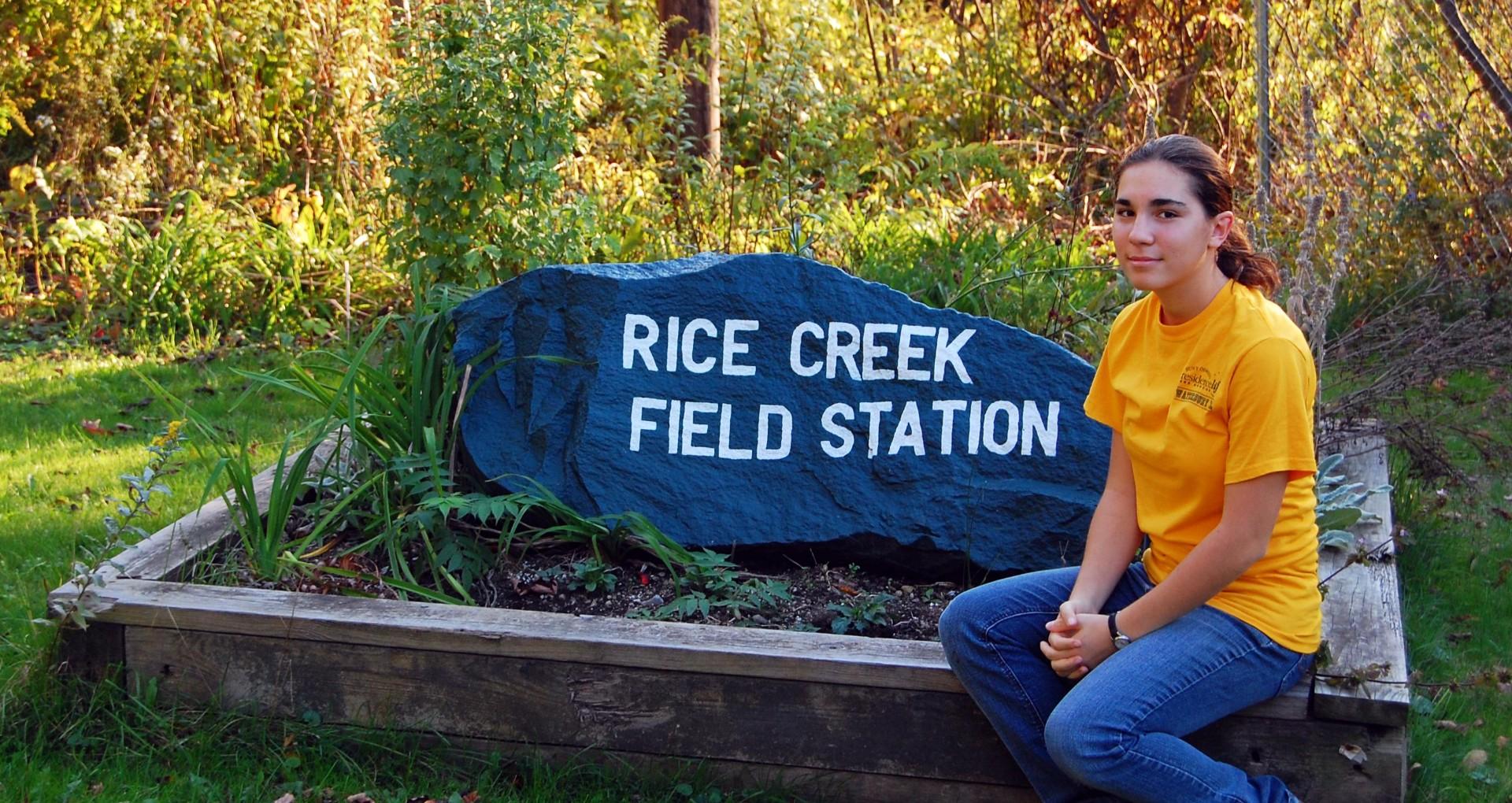Winter-Spring 2011
Snow tracking and GIS: Taking advantage of new technology for evaluating coyote habitat at RCFS in winter
The focus of my research was taking advantage of new GIS technology in combination with older techniques like snow tracking, to efficiently assess habitat use of the coyote in Rice Creek Field Station. It is important to take advantage of new technologies as they can provide accurate information on your research question. In this case, GIS and snow tracking are both cheaper and more accurate than radio telemetry, and do not incur the cost that would come with trapping and GPS collars.
One of the most important things that I learned throughout is that ecology is complicated and conducting field research does not always go the way you planned it. Sometimes the elements just do not agree with your research. Originally I had been doing red fox and coyote tracking, but in the end there was not enough red fox data. But I also learned a lot in this process. I learned how to work with what you have and how to make sure you only draw conclusions within the limits of your data - which is very important
Snow tracking is great, and being able to GPS that data means accuracy. But this also means going through pricker bushes and several feet of snow. I remember after some time on my first excursion after having no luck finding canine tracks, I got so excited when I followed some off the trail and was able to positively identify them as coyote tracks. It got even better when I found a den site. Although I never saw a coyote during my research (which is probably a good thing), seeing the signs in the field and being able to log that data in to see the big picture later was a lot of fun and very rewarding.
I grew up in Staten Island, NY, which is part of New York City. A lot of people have asked me how I became interested in science, namely field ecology, which involves being outdoors a great deal. I think being in the city piqued my curiosity about what I did not have a lot of exposure to there. It also was a constant reminder of how people on this planet can take nature and everything in it for granted. Since I was very young, I have had a passion for conservation, and therefore, the science behind it.
Well for the immediate future, I will be graduating in December 2012 with my Bachelors of Science in Zoology. I am currently in the process of applying for Master's programs in either wildlife ecology or conservation biology. A curiosity I may one day pursue (doctorate perhaps?) is bringing large predators back to the northeast. My goal is keep working for conservation, especially in the American Northeast. Throughout my undergraduate career, I learned that the wildlife in our own backyard do not get enough attention, while exotic species that are media friendly get a lot of support and funding (which is great!). I think more help is needed for our local environment.



